Art World
16 Spectacular Fashions From Throughout Art History That Can Help You Maintain Your Social Distance (While Making You Look Great)
Tired of wearing pajamas? Here are a few looks to inspire you—and help you keep safe.

Tired of wearing pajamas? Here are a few looks to inspire you—and help you keep safe.

Katie White

Are you eager to get back outside, but concerned about keeping your social distance?
Maintaining six feet of space between yourself and others is not always easy, nor intuitive (especially on crowded city streets).
In one creative solution, Chinese schoolchildren have been sporting delightful homemade hats with balloons, strips of cardboard, and other odds-and-ends that jut out, encouraging kids to keep apart.
But while the hats have won worldwide admiration, what some may not realize is that this signature style has a historical precedent dating back nearly a thousand years.
Duke University professor Eileen Chengyin Chow pointed out that the kids’ caps bear a striking resemblance to Song Dynasty futou, official court headwear characterized by two black wings on either side. These horizontal plumes were meant “to prevent officials from conspiring sotto voce with one another while at court,” she wrote on Twitter.
And that’s just one instance of fashion being used to quite literally make space. Across the centuries, different styles have been used to create barriers for social, political, and—yes—even health purposes.
During outbreaks of the bubonic plague, physicians wore (and pardon the frightfulness of this image) pointed, beak-like masks and head-to-toe body coverings to keep them from the sick. The nightmarish garb is often traced back to Charles de Lorme, a physician who tended to 17th-century European royals.
At the time, the plague was wrongfully believed to be carried through “poisoned air” that could be warded off with perfumes. Though the plague doctors’ herb concoction, known as theriac, certainly was not protective, the costume became so well-known that it remains a common Venetian carnival costume to this day.
Flash forward a few centuries to Victorian-era Crilonemania, an obsession with crinolines, the voluminous skirts that defined mid-19th century Western fashion. This hulking skirt was worn to create polite distances between men and women in social settings.
Though dress reformers decried the skirt as impeding women’s mobility (they called it a fire hazard), the crinoline may have inadvertently shielded wearers from the health scourges of cholera and smallpox. Similarly, gigantically brimmed hats likewise played a role in keeping suitors—and strangers—at a distance in 18th- and 19th-century society. (The era’s accompanying hatpin was also a handy weapon).
So for those of you who could use a little socially distant wardrobe inspiration after months in pajamas, we’ve pulled together a few of our favorite fashion options from art history.
And no matter what your attire, don’t forget your mask!
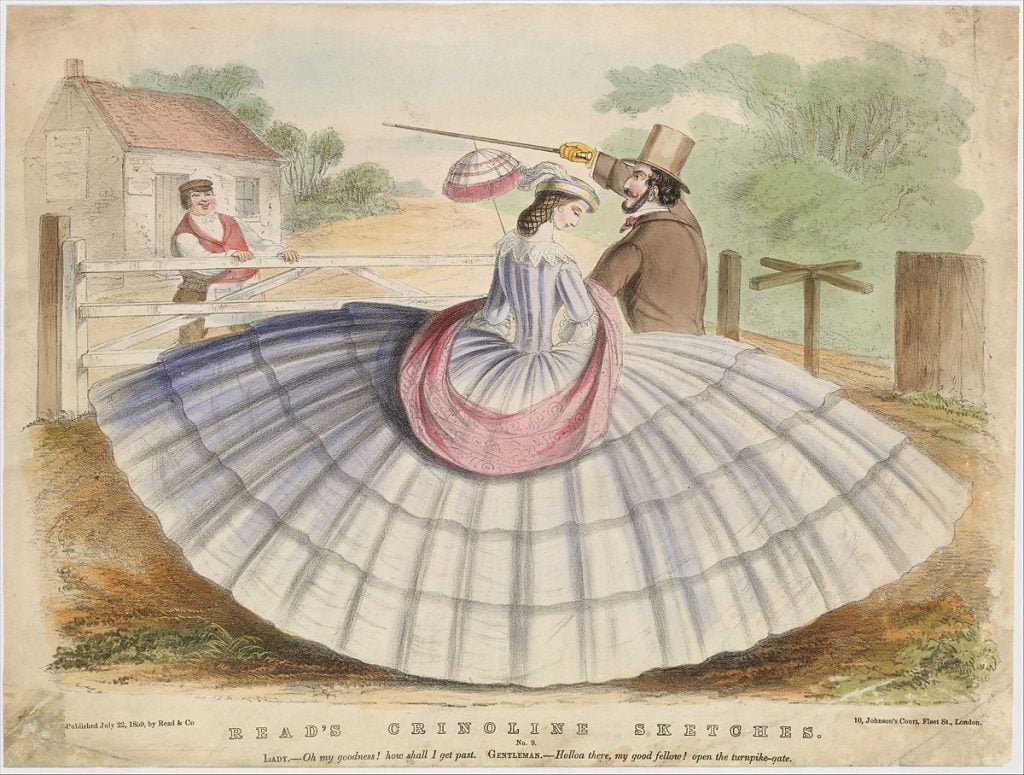
Read’s Crinoline Sketches, No. 9 (July 22, 1859) British, anonymous. Courtesy of the Metropolitan Museum of Art.
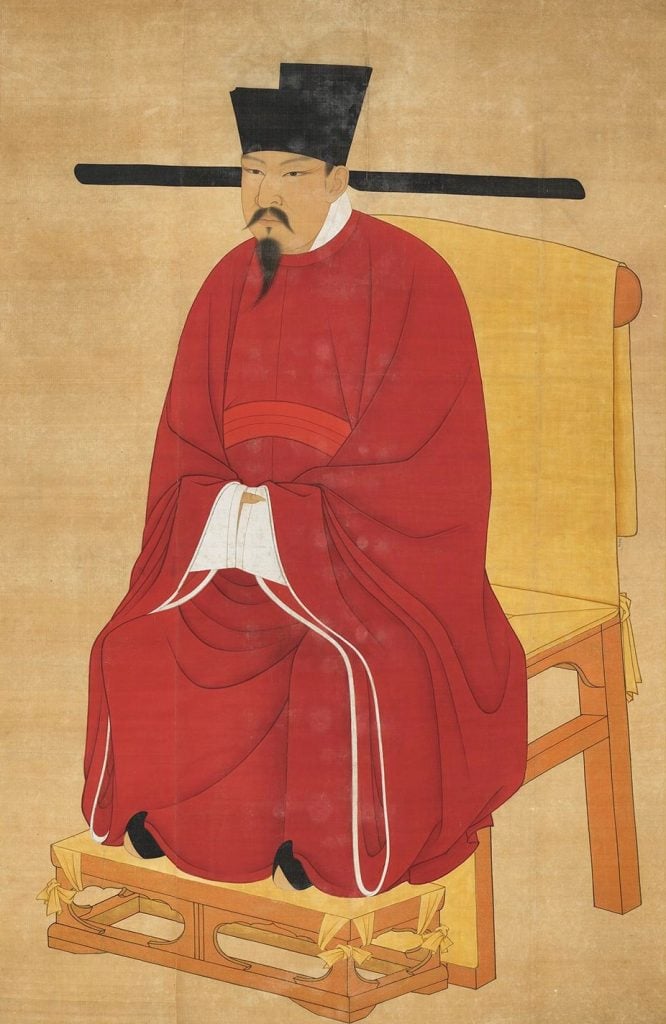
Hanging portrait of Emperor Shenzong of Song (Reign from 1067–1085). Courtesy of National Palace Museum, Taipei, Taiwan
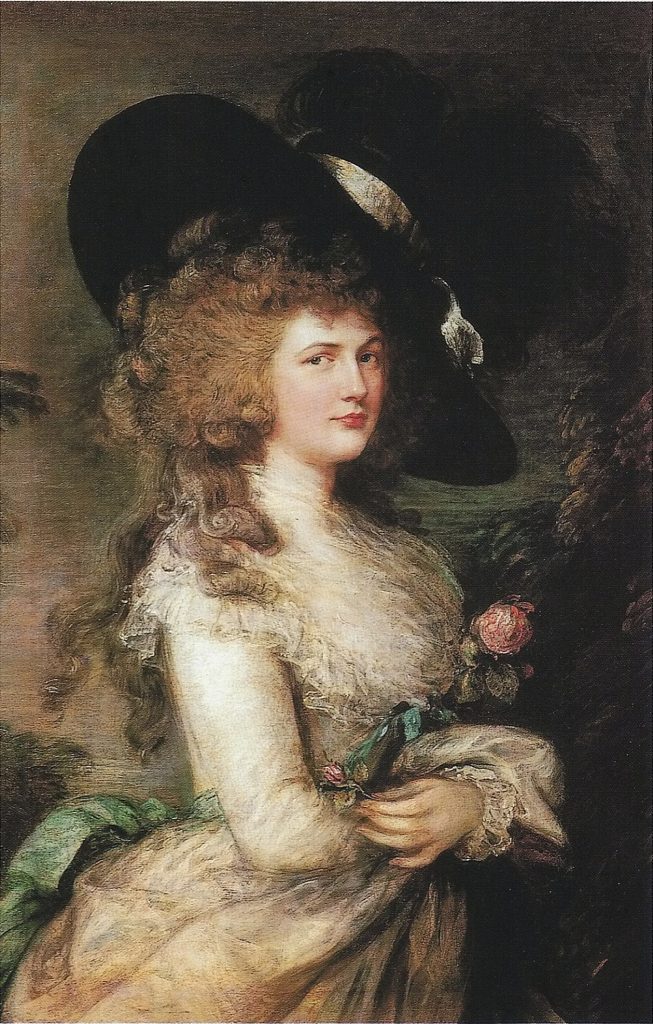
Thomas Gainsborough, Lady Georgiana Cavendish (1785–87). Courtesy of Chatsworth House.

Color copper engraving of Doctor Schnabel, a plague doctor in seventeenth-century Rome, published by Paul Fürst (ca. 1656). Courtesy of Wikimedia Commons.

René Magritte, The Lovers (1928).
Courtesy MoMA.
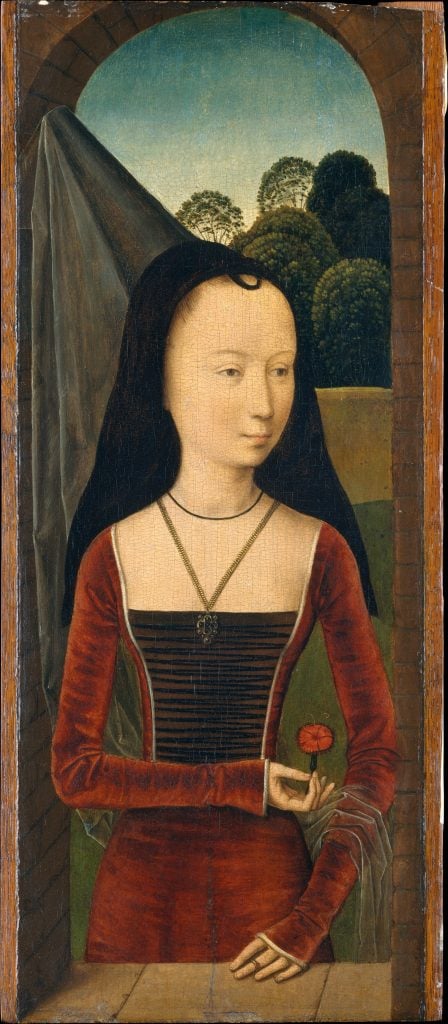
Hans Memling, Young Woman with a Pink (circa 1485–90). Courtesy of the Metropolitan Museum of Art.
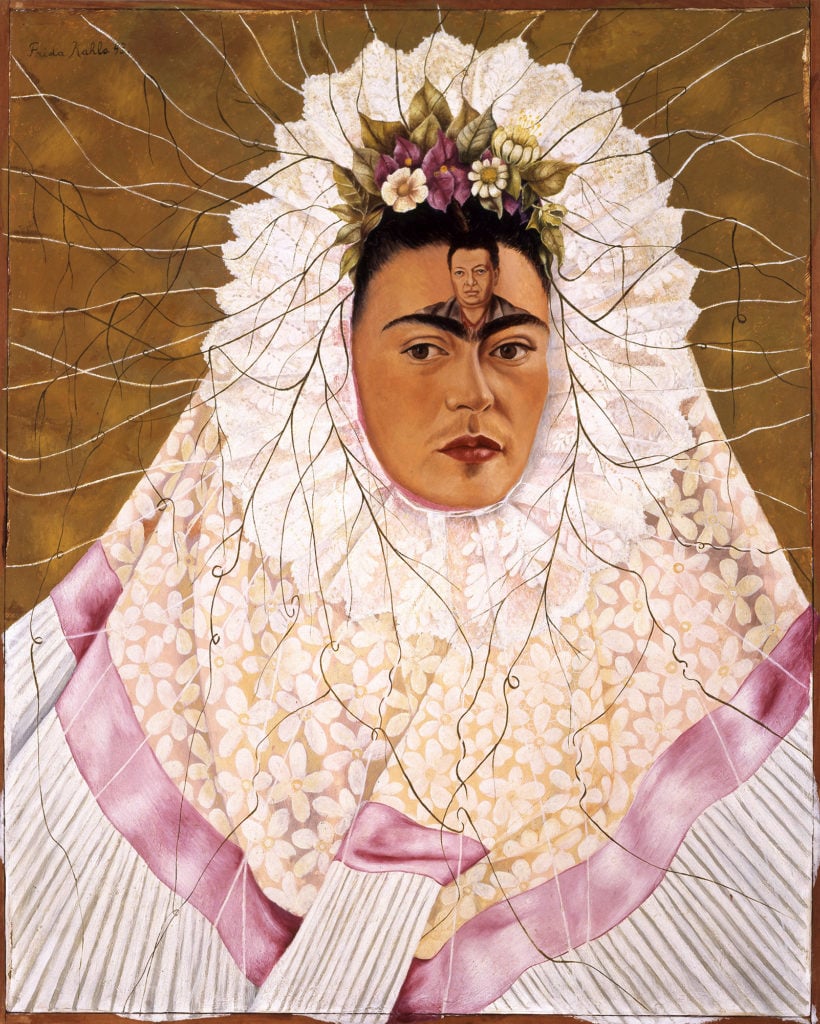
Frida Kahlo, Self-Portrait as a Tehuana (1943). © 2019 Banco de México Diego Rivera Frida Kahlo Museums Trust, Mexico, D.F. / Artists Rights Society (ARS), New York.
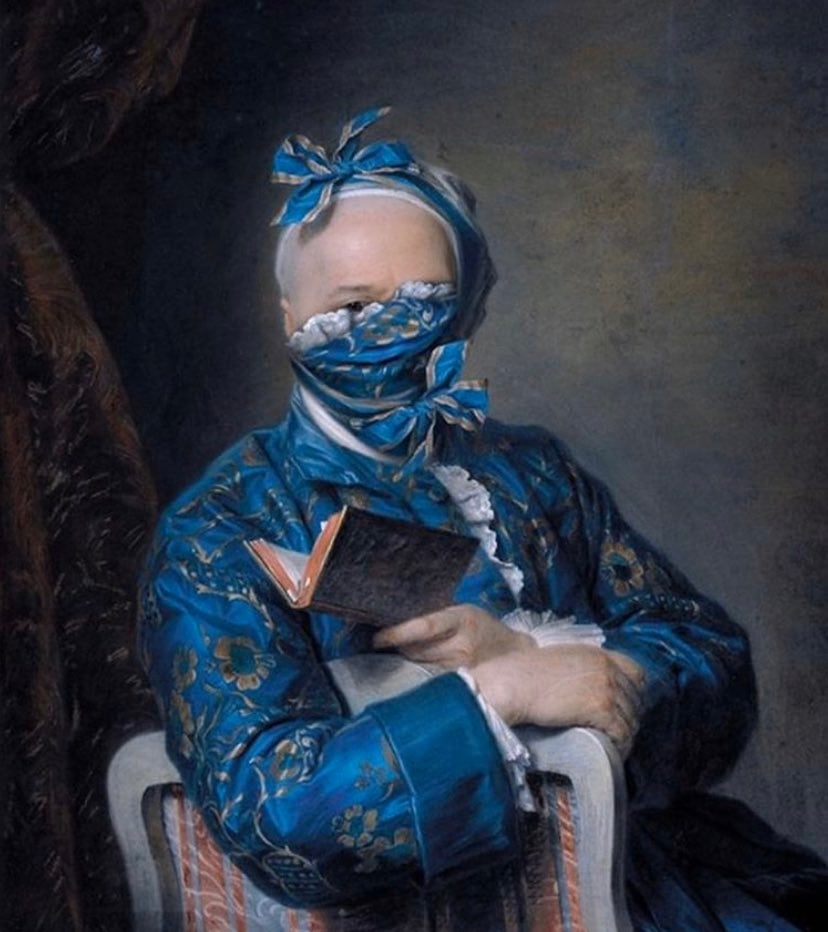
Volker Hermes, Hidden Quentin de la Tour (2019). Courtesy of the artist’s Instagram.
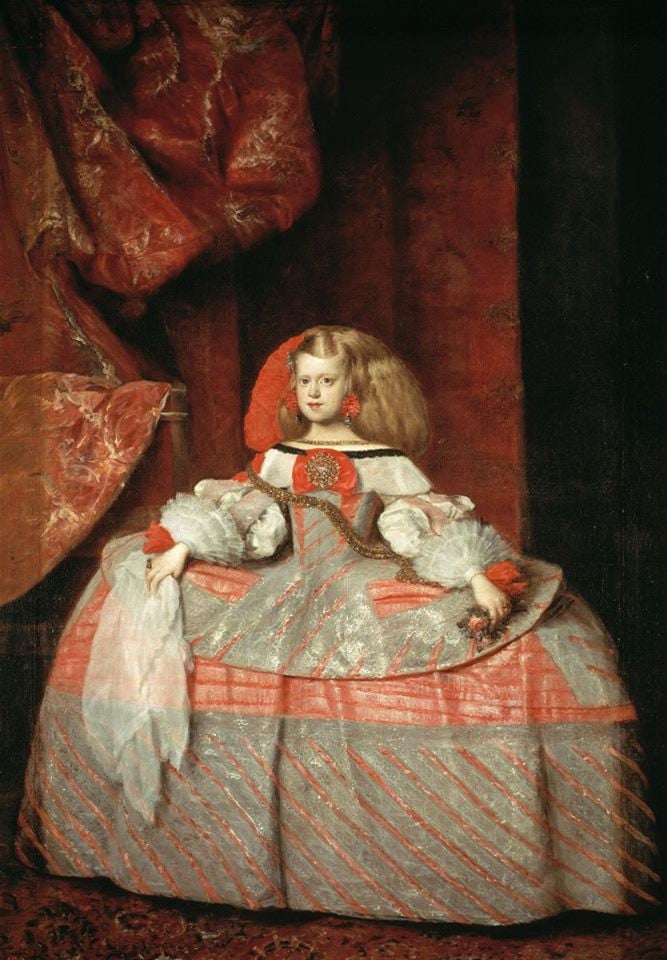
Diego Velazquez, Infanta Margarita Teresa (1660). Courtesy of El Museo del Prado.

Rogier van der Weyden, Portrait of a Young Woman in a Pinned Hat (1435). Courtesy of Gemäldegalerie, Berlin, Germany.

Albrecht Durer, Three Mighty Ladies from Livonia (1521). Courtesy of Wikimedia Commons.
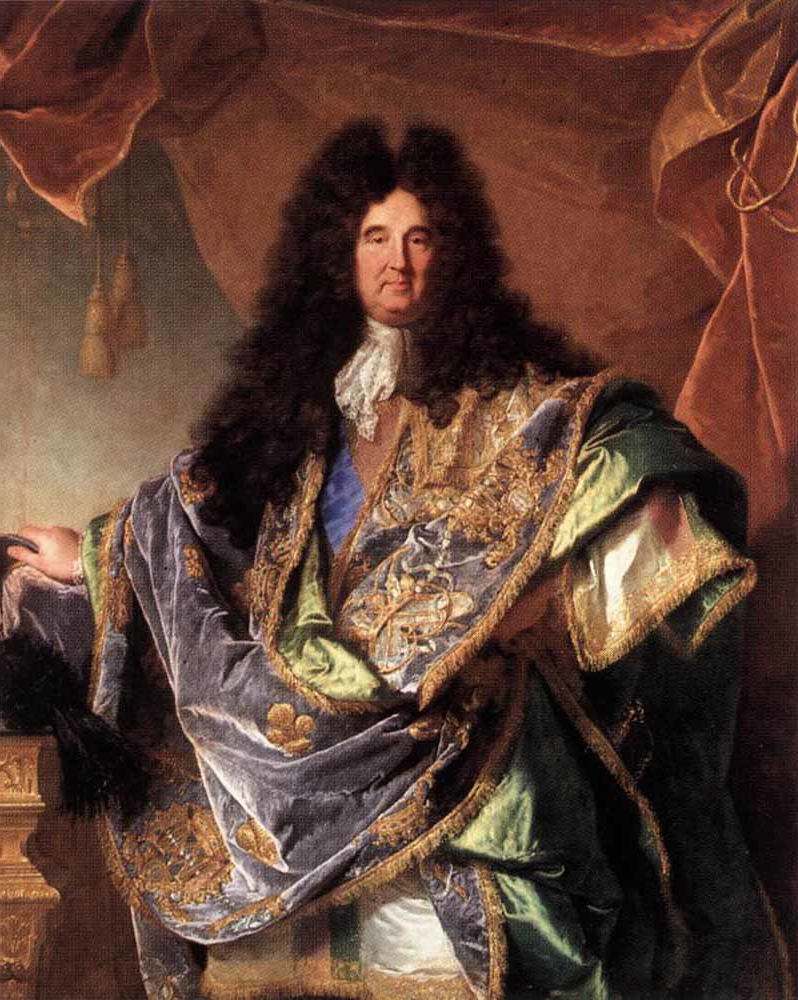
Hyacinthe Rigaud, Portrait of Philippe de Courcillon (1702). Courtesy of Wikimedia Commons.
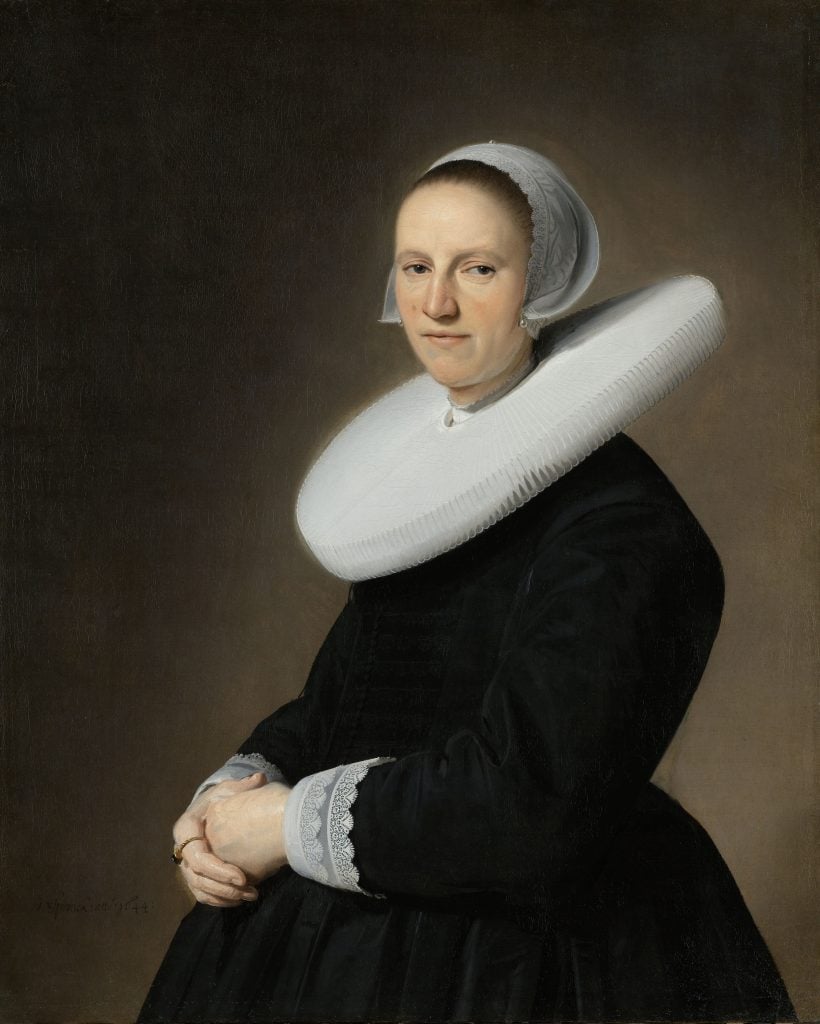
Jan Verspronck, Portrait of Adriana Croes (1644). Courtesy of the Rijksmuseum.
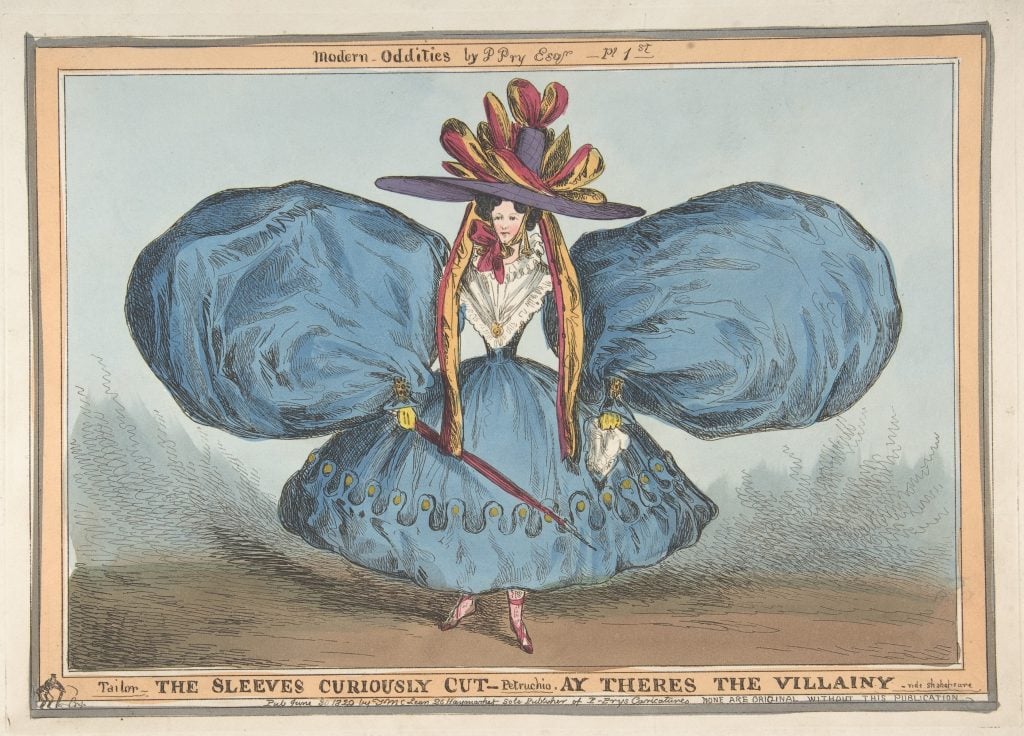
William Heath (‘Paul Pry’), Modern Oddities: The Sleeves Curiously Cut, Ay There’s the Villainy – vide Shakespeare (June 30, 1829). Courtesy of the Metropolitan Museum of Art.
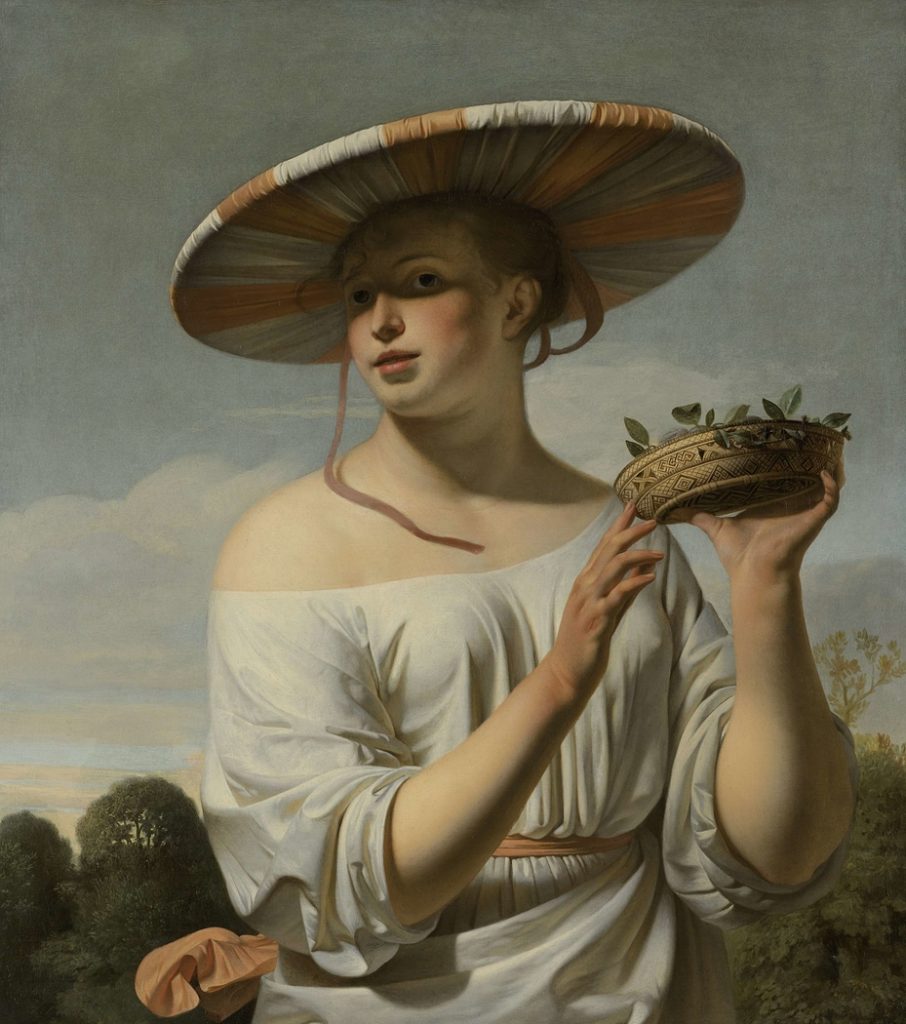
Cesar van Everdingen, Girl in a Large Hat (1650).